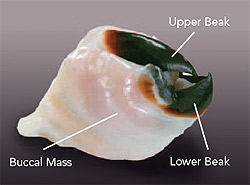Paul Marasco, PhD
 Research interests
Research interests
Sensory Integration with Prosthetic devices, Amputee Research, Cognitive Embodiment, Visual-Tactile Integration, Sensory Neurophysiology, Brain Organization, Neural Plasticity, Kinesthesia, Diabetic Sensory Neuropathy
Dr. Marasco earned his Neuroscience PhD from the Vanderbilt Brain Institute of Vanderbilt University in Nashville Tennessee. There he underwent formal interdisciplinary training in molecular neuroscience and developmental molecular genetics. His independent graduate work focused on studying the sensory neural system of the mole in the laboratory of Dr. Kenneth Catania. This research involved a collaborative systems-level approach to explore the neuro-mechanical function of the Eimer’s Organ, a specialized touch structure arrayed on the nose of the mole. This work combined electrophysiology with novel molecular tracer methods, immunohistochemistry and electron microscopy to provide insight into sensory neural function.
Dr. Marasco’s post-doctoral work moved to a clinical translational focus when he joined Dr. Todd Kuiken’s Center for Bionic Medicine [ CBM ] (Formerly the Neural Engineering Center for Artificial Limbs [NECAL ]) at the Rehabilitation Institute of Chicago. At CBM/NECAL Dr. Marasco studied physiologically relevant sensory integration with prosthetic devices. Targeted reinnervation is a new neural-machine interface that was developed by Dr. Todd Kuiken to help improve the function of advanced prosthetic limbs. Targeted reinnervation is a procedure where the nerves that once innervated a severed limb are surgically redirected to proximal muscle and skin sites. The motor nerves reinnervate the new muscles and the resulting signals from the contractions are used to direct the movement of multifunction computerized artificial limbs. The redirected sensory nerves reinnervate the new skin and create a sensory expression of the missing limb in the amputee’s reinnervated skin. When these amputees are touched on this reinnervated skin they feel as though they are being touched on their missing limb. Dr. Marasco investigated this sensory phenomenon using both human and animal model approaches utilizing Targeted Reinnervation. These investigations included a diverse array of experimental tools such as psychophysics, perceptual mapping, cortical and peripheral neural recording.
 Dr. Marasco’s broad-based sensory neuroscience research continues as a principal investigator in the Advanced Platform Technology Center at Louis Stokes Cleveland Veterans Affairs Medical Center. Here he has honed his translational approach using animal models to answer basic science questions and then using them to inform clinical approaches while conversely utilizing human research subjects to provide scientific insight into how the brain functions. Dr. Marasco is currently involved with studies to understand kinesthesia. His work is focused on understanding the mechanistic aspects and brain organizational properties of this poorly understood sense. His express goal is to develop a deeper systems-level understanding of the kinesthetic sense so that methodologies can be established to provide prosthetic limbs with a physiologically relevant sense of limb position. Dr. Marasco is also involved in work with Dr. Dustin Tyler of the Functional Neural Interfaces Laboratory (FNI-Lab) at Case Western Reserve University to develop a direct neural stimulation system for sensory feedback in human amputees.
Dr. Marasco’s broad-based sensory neuroscience research continues as a principal investigator in the Advanced Platform Technology Center at Louis Stokes Cleveland Veterans Affairs Medical Center. Here he has honed his translational approach using animal models to answer basic science questions and then using them to inform clinical approaches while conversely utilizing human research subjects to provide scientific insight into how the brain functions. Dr. Marasco is currently involved with studies to understand kinesthesia. His work is focused on understanding the mechanistic aspects and brain organizational properties of this poorly understood sense. His express goal is to develop a deeper systems-level understanding of the kinesthetic sense so that methodologies can be established to provide prosthetic limbs with a physiologically relevant sense of limb position. Dr. Marasco is also involved in work with Dr. Dustin Tyler of the Functional Neural Interfaces Laboratory (FNI-Lab) at Case Western Reserve University to develop a direct neural stimulation system for sensory feedback in human amputees.
Photo: Squid beak from project, "Bio-inspired Materials for New Prosthetic Liners." Attaching hard metal or plastic prosthetic components to the soft, vulnerable skin and muscle of the residual arm or leg is a recipe for discomfort, or worse, further injury and tissue damage. Our goal is to improve the interface between a veteran amputee and their prosthetic limb by developing a new material for prosthetic liners inspired by the ‘shock absorber’ function of a squid beak. Dr. Marasco is a principal investigator on this project.
The Power of Touch: Taking Advanced Limb Prosthetics to a New Level
All About Sensation: Taking Advanced Limb Prosthetics to a New Level




















